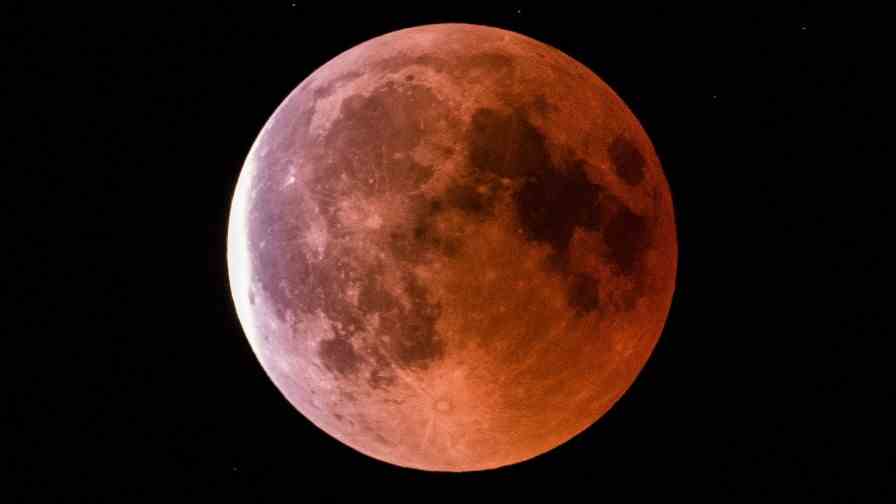During the night of Monday, May 16th, the moon will turn blood red. At least that’s what it looks like in parts of Africa, North and South America, the Middle East, New Zealand, Antarctica and also in Europe. For the first time this year, a total lunar eclipse can be observed, the earth will slide right between the moon and the sun.
When does a lunar eclipse occur?
Normally, the sun shines on the moon, which reflects the light back to earth – making it appear as if the moon itself were shining. However, if the earth moves between the moon and the sun during a lunar eclipse, the moon gets into the umbra of the earth. This happens on average a couple of times a year.
Although the natural spectacle is called a lunar eclipse, the moon is anything but dark – it appears reddish in color. The reason for this is that the sunlight is refracted by the earth’s atmosphere and broken down into its color components. Long-wave blue light is scattered more, red light less. The latter in particular is thereby deflected into the umbra of the earth. This turns the moon red.
However, the red coloring only occurs during a total lunar eclipse. During a penumbral eclipse, the moon only enters the lighter part of the shadow and at most gets a little darker. During a partial lunar eclipse, the moon partially moves into the umbra of the earth and becomes darker.
When can you see the lunar eclipse?
According to the website timeanddate.com the penumbral eclipse begins on the morning of May 16 at 3:32 a.m. Central European Time, at 4:27 a.m. the partial lunar eclipse occurs. At 5:29 a.m. the moon has completely entered the umbra. The moon can still be seen just above the horizon at this time, but the rising sun could make it difficult to see.
The total phase of the lunar eclipse reaches its peak at 6:11 a.m. and ends at 6:53 a.m. However, as seen from Germany, the moon has already sunk behind the horizon. So if you want to get a good view of the lunar eclipse, a place with a good view of the western horizon is recommended. The further west you are, the longer you can observe the moon, as the sun rises a little later here. In the southwestern part of Europe, for example in Spain and Portugal, the conditions within Europe should be particularly good.
The next total lunar eclipse will be visible on November 8, 2022, but only in parts of northern and eastern Europe. After that there is a break of more than two years until the moon dips into the umbra of the earth again in March 2025 and appears blood-red.

